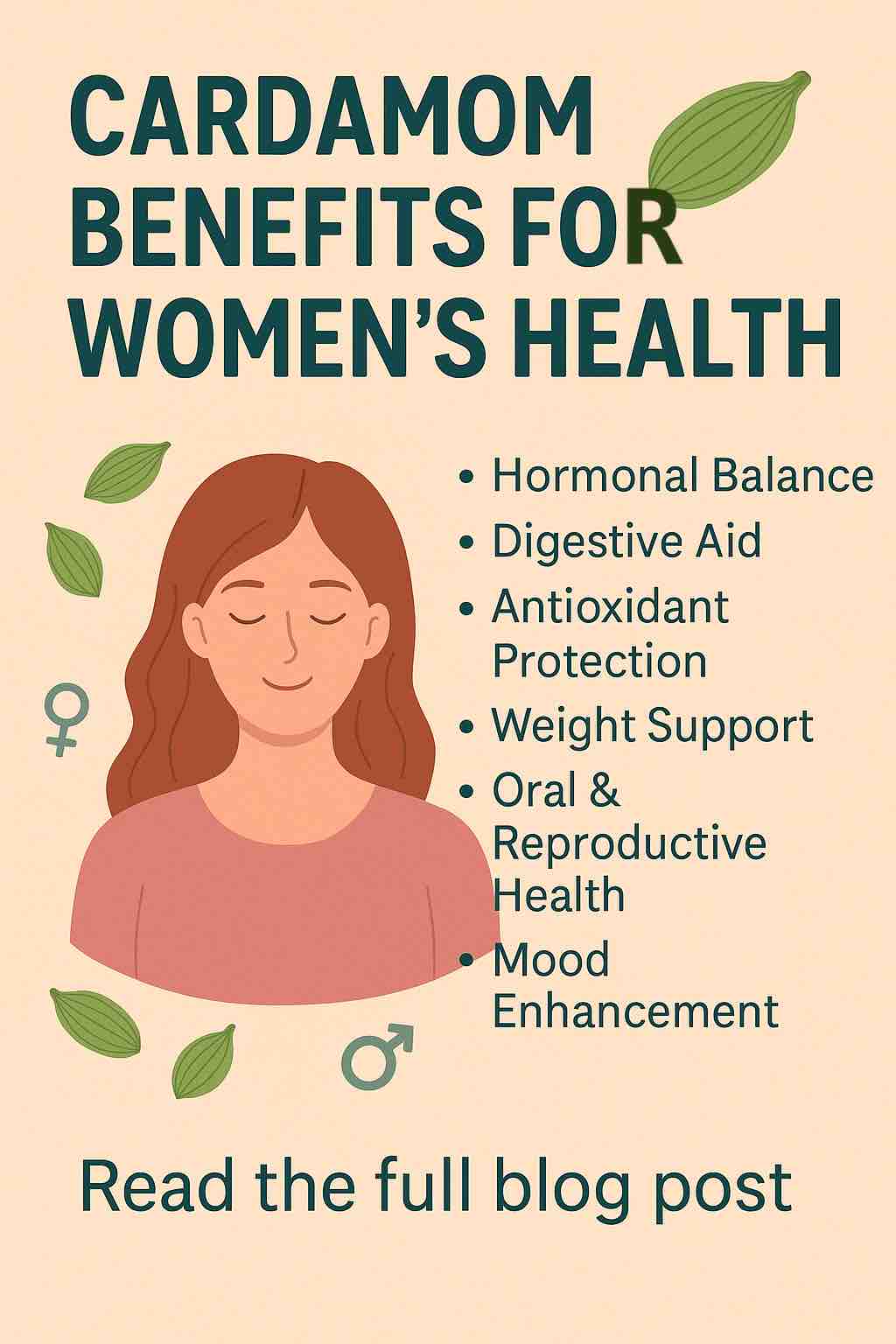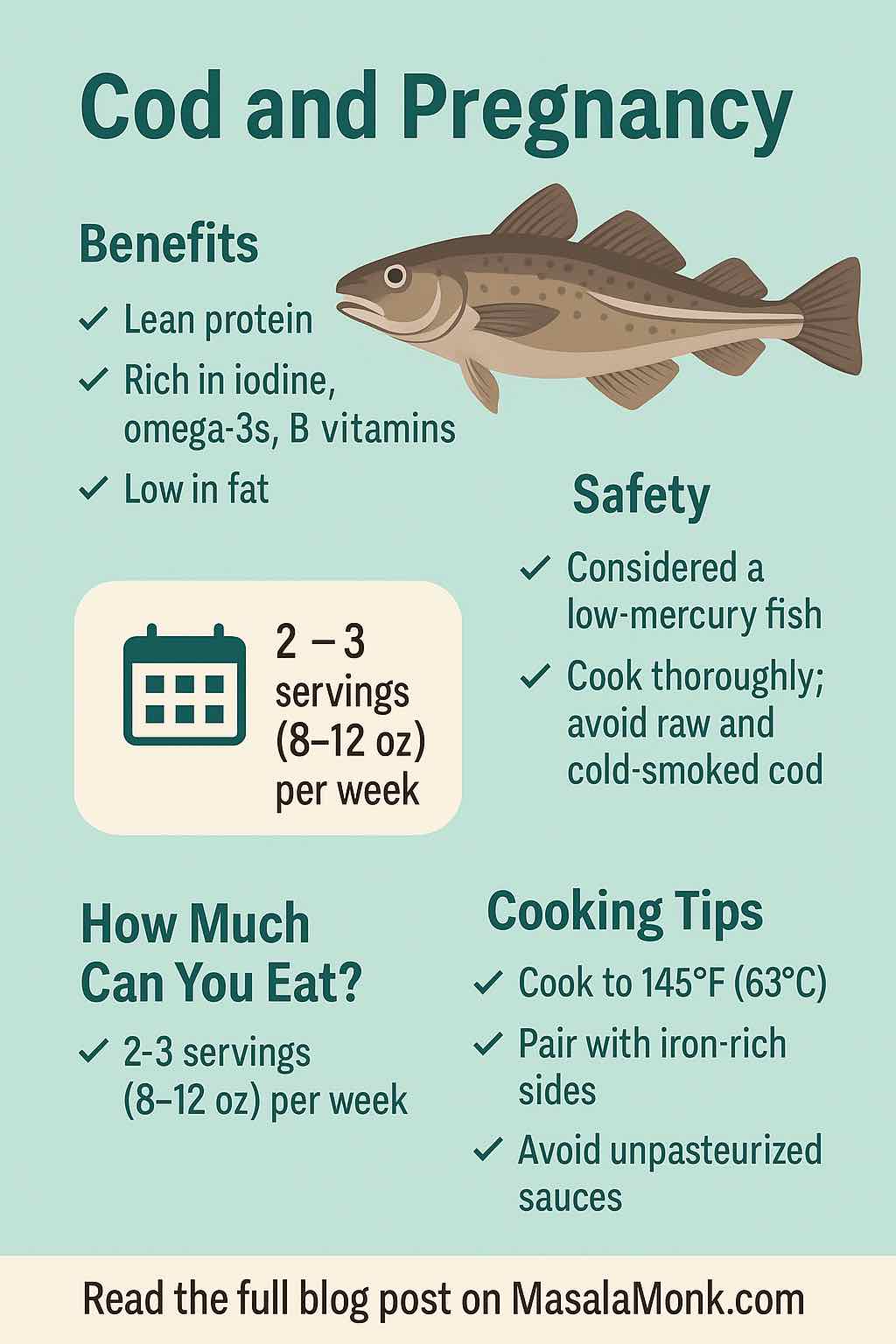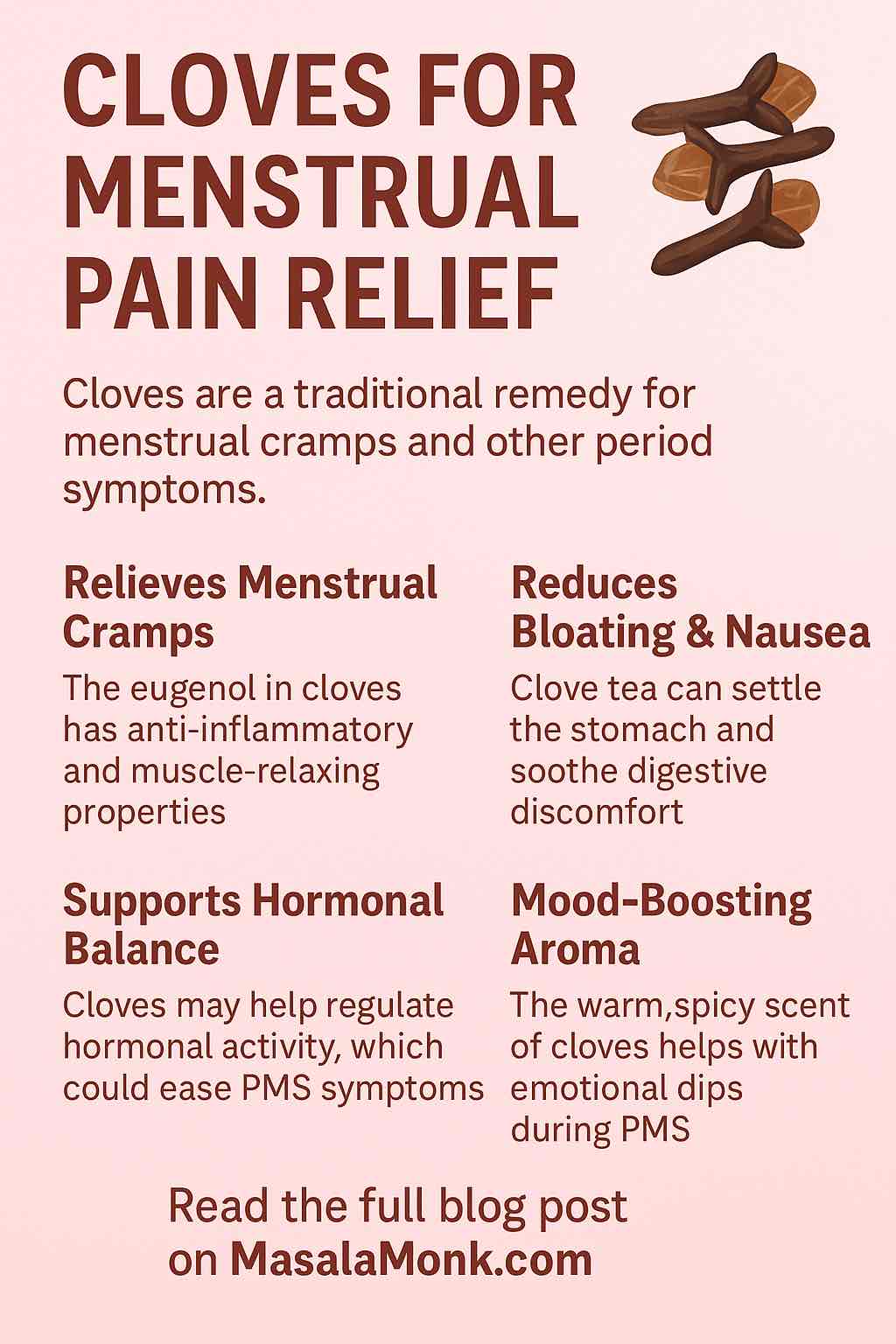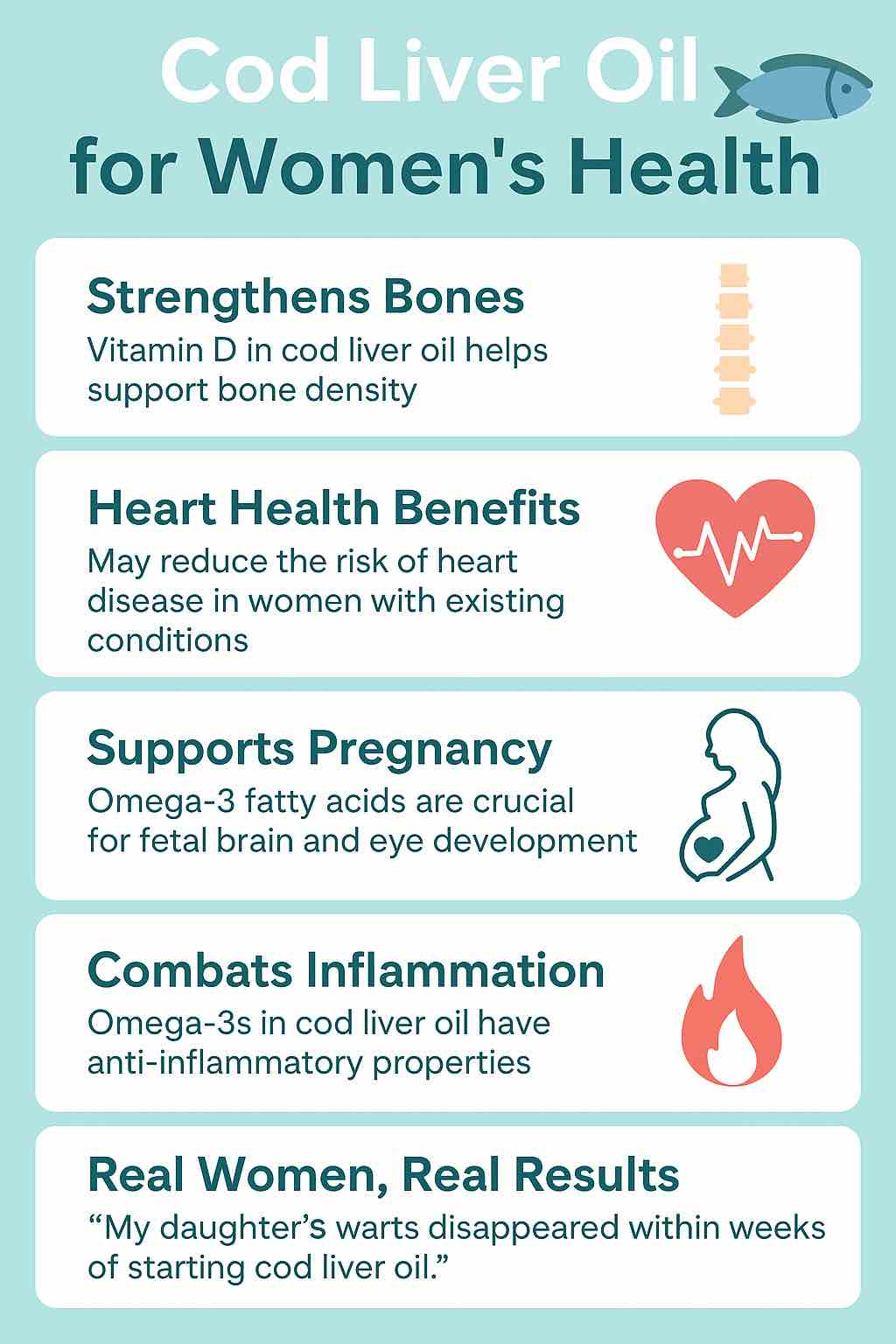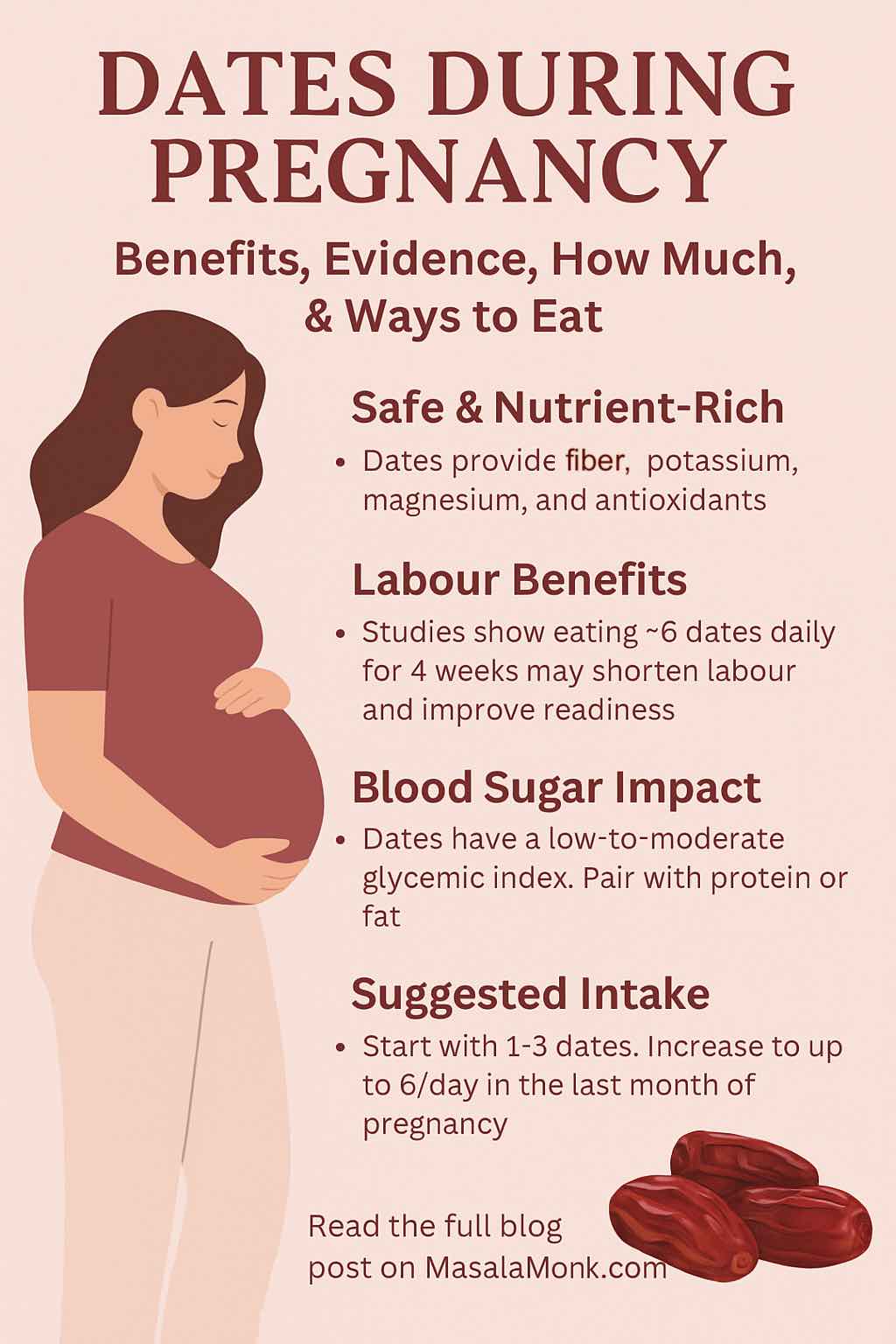
Pregnancy comes with a lot of advice—especially when it comes to food. If you’ve heard that eating dates in late pregnancy can help with labor and wondered if that’s actually true, you’re not alone. The good news: there’s a growing body of research (including recent trials and meta-analyses) suggesting that dates can be a smart, safe addition—especially in the last month—when eaten in moderation and with your clinician’s guidance.
This guide covers what the latest evidence says, how many dates to eat (and when), what to pair them with, when to be cautious (hello, gestational diabetes), and simple, tasty ways to work dates into your day.
The quick verdict
- Safe for most: Dates are generally safe in pregnancy as part of a balanced diet. They’re rich in fiber, potassium, magnesium, and small amounts of iron and folate.
- Labor benefits (late pregnancy): Several trials (and a meta-analysis) suggest that eating dates daily in the last 4 weeks can support shorter labor phases, better cervical readiness, and less need for induction/augmentation. Evidence quality varies, but the trend is promising.
- Sugar & GI context: Dates have natural sugars, but many varieties show low-to-moderate glycemic index (GI); effects on blood sugar depend on variety, ripeness, portion size, and what you eat them with.
Read more: Low Glycemic Index (GI) Foods List: PDF for Free Download!
Why dates make sense in pregnancy
Nutrients that matter now
Dates bring fiber (digestive comfort), potassium (fluid balance, muscle function), magnesium (muscle/nerve function), and small amounts of iron and folate that support red blood cell formation and early fetal development. They also contain polyphenols and other antioxidants—handy in a time of increased oxidative stress.
On busy days, two or three dates with a protein/fat (like nuts or yogurt) are an easy, portable snack that won’t melt in your bag.
What the latest research actually says
1) The classic late-pregnancy signal (6 dates/day for 4 weeks)
In a well-known prospective study from Jordan, women who ate dates during the last four weeks of pregnancy needed less induction/augmentation and arrived with better cervical readiness compared to controls. The authors concluded that dates were associated with more favorable labor dynamics and called for RCTs to validate the findings.
2) Randomized trials and mechanistic insight
Subsequent trials—including an RCT from Iran—indicate that date consumption in late pregnancy can shorten active and total labor phases and reduce oxytocin use. Mechanistically, dates seem to enhance uterine responsiveness to oxytocin—think “better-coordinated contractions” rather than “stronger at all costs.”
3) 2024 meta-analysis: consistent benefits across studies
A 2024 meta-analysis pooling multiple studies concluded that dates consumed late in pregnancy:
- Shortened labor (especially latent/early and active phases)
- Reduced need for induction
- Improved cervical dilatation/Bishop scores
- Increased spontaneous vaginal delivery rates
Note: benefits weren’t uniform for every single stage in every study (e.g., second/third stage), reflecting different designs and sample sizes—but the direction of effect is notably consistent.
4) 2025 RCT update
A newer trial reported in 2025 reinforces the trend: date eaters had shorter labor stages and authors proposed plausible biological reasons (fatty acid profile aiding prostaglandin production, for example).
Bottom line on evidence: The strongest effects show up when healthy pregnant adults eat ~6 dates daily for the final 3–4 weeks. Results look directionally positive across multiple outcomes (labor duration, cervical readiness, induction needs). Keep expectations realistic: not every metric is affected equally in every study, and clinicians will still individualize care.
Also have a look at: Folate-Fortified Drinks for Pregnancy: 5 Non-Alcoholic Mocktails
Dates and blood sugar: what you should know
Dates do contain natural sugars, but GI data are more nuanced than “high sugar = high spike.” Across different varieties and studies, GI values for dates span low to moderate, influenced by the cultivar and ripeness. Some analyses (including in pregnant populations) report GI values roughly in the 42–62 range, with many varieties in the low-to-moderate zone.
In people with diabetes, RCTs and systematic reviews suggest neutral glycemic effects when dates are eaten in measured portions (e.g., ~60 g/day) and paired well—supportive for those monitoring blood glucose. Translation to pregnancy: use the same smart pairing and portion control, and follow your clinician’s advice.
Practical tip:
- Treat 2–3 dates as a snack portion.
- If you’re following the late-pregnancy protocol (~6/day), split them (e.g., 2–2–2) and pair with protein/fat (nuts, yogurt) to blunt spikes.
- Monitor your numbers closely if you have gestational diabetes.
Read more about What Are the Symptoms of Gestational Diabetes?
How many dates—and when?
- General nutrition (all trimesters): 1–3 dates at a time, paired with protein or fat.
- Labor support (final 4 weeks): Many trials used ~6 dates per day—that’s the intake level most consistently associated with shorter labor and better cervical readiness. As always, check with your care team first.
Who should be cautious?
- Gestational diabetes or insulin resistance: Dates can still fit in many plans, but portion-control and pairing matter. Work with your clinician/dietitian; adjust if your fingersticks trend high. (Useful companion read: low-GI meal ideas in our GDM-friendly recipe roundup.)
→ Explore: 5 Gestational Diabetes-Friendly Recipes for Expectant Mothers - New to high-fiber foods: Ramp up gradually to avoid bloating. (Fiber is beneficial—but more isn’t always better on day one.)
- Allergy or oral-allergy syndrome: Uncommon with dates, but discontinue if you notice itching/swelling and consult your clinician.
Exactly how dates might help with labor
Researchers point to a few complementary mechanisms:
- Oxytocin sensitivity: Dates seem to increase uterine responsiveness to oxytocin, producing more effective contractions rather than just stronger ones.
- Prostaglandin pathways: Dates contain fatty acids (e.g., oleic/linoleic) that may support prostaglandin production, which is involved in cervical ripening and uterine readiness.
- Readiness on arrival: Women consuming dates often arrive with higher Bishop scores (more favorable cervix), which correlates with smoother, less intervention-heavy labors.
Think of dates as tuning the system (uterus/cervix) to respond more efficiently—not as a guaranteed natural induction.
Smart, everyday ways to eat dates
1) Date-nut energy bites
Blend soft dates with almonds or walnuts and a pinch of cardamom. Roll into small balls. Two bites = a measured snack with fiber, fat, and protein.
2) Stuffed dates (sweet-savory)
Fill Medjool dates with a spoon of Greek yogurt or nut butter; finish with sesame or crushed pistachio. Great pre-walk fuel.
3) Smoothie add-in
1–2 dates whizzed with milk or yogurt, ice, and a spoon of oats. (If you’re tracking sugar, blend one date and taste first.) You night enjoy 5 Protein-Packed Smoothies for Pregnancy with Peanut Butter and Chia Seeds
4) On warm cereals
Chop 1–2 dates over ragi porridge for iron + calcium synergy; sprinkle almonds for crunch.
→ Related reads: Benefits of Ragi During Pregnancy and 7 Benefits of Almonds During Pregnancy
5) Baking swap
Use a simple date paste (soaked dates blended with a little water) to replace part of the sugar in muffins or laddoos.
6) With meals
Two dates alongside a protein-rich main (e.g., eggs, paneer, lentils, or a cooked fish like cod) make a satisfying finish.
→ For safe fish choices and cooking temps: Cod and Pregnancy
Myth-busting (because you’ll hear these!)
- “Dates make the baby dark.”
Skin tone is genetic. There’s no evidence linking date consumption to skin color. (Eat dates for labor readiness and nutrition, not for myths.) - “Dates are too sugary to be healthy.”
Dates contain natural sugars with fiber and polyphenols. Many varieties show low-to-moderate GI; portion size and pairing determine the glycemic impact. If you have GDM, monitor and modify—but dates aren’t automatically off the table.
Putting it all together: a simple plan
Weeks 0–32 (general):
- 1–3 dates as a snack, paired with nuts or yogurt.
- Use date paste to replace a portion of refined sugar in bakes.
- If you’re working on iron intake, pair dates with vitamin-C-rich foods (e.g., oranges) and iron-rich bases (like ragi).
Weeks 36–40 (late pregnancy protocol):
- Up to ~6 dates/day, split across meals (e.g., 2–2–2), if your clinician agrees.
- Keep pairing with protein/fat.
- Track how you feel and, if needed, your glucose levels.
- Remember: dates support readiness and efficiency, not guaranteed onset.
The science, at a glance
| Outcome / Topic | What studies suggest |
|---|---|
| Labor duration | Shorter latent/active phases; some reductions in overall duration. |
| Induction/augmentation | Lower need for oxytocin/prostin. |
| Cervical readiness | Higher Bishop scores, more favorable cervix on admission. |
| Mechanism | Enhanced oxytocin sensitivity; prostaglandin support. |
| Glycemic impact | Varietal/portion-dependent; many date types show low-to-moderate GI. |
| Safety | Generally safe food; moderate portions recommended; tailor if GDM. |
A note on quality and clinical nuance
While outcomes across studies are encouraging, keep in mind:
- Designs and sample sizes vary; not every phase of labor shortens in every trial.
- The strongest signal appears with daily intake in the final 4 weeks.
- Personalization matters: Your OB/Gyn or midwife knows your history—always check in if you’re high-risk, managing GDM, or have other dietary restrictions.
The Bottom Line
Dates are a simple, delicious upgrade for pregnancy snacking:
- They pack fiber and minerals, help you swap out junky sweets, and—most intriguingly—may help your body prepare for labor if you enjoy them during the final month.
- If you have GDM or glucose concerns, you don’t have to miss out—pair your dates with protein/fat, keep portions modest, and monitor how you respond.
- As always, your clinician’s guidance wins—especially around late-pregnancy diet tweaks.
When you’re ready to add dates to a balanced prenatal routine, pair them with nutrient-dense staples:
- Whole grains like ragi → Benefits of Ragi During Pregnancy
- Healthy fats and crunch from almonds → 7 Benefits of Almonds During Pregnancy
- Savory protein mains like cod and other low-mercury fish → Guide to Seafood and Pregnancy
Sweet, simple, evidence-informed—that’s the way dates belong in your pregnancy.
Sources (key, recent)
- RCT on late-pregnancy date intake and labor outcomes (six/day for four weeks).
- Meta-analysis of date consumption and labor metrics (latent/active phase duration, induction rates, Bishop score).
- Mechanistic discussion: oxytocin responsiveness and cervical readiness with date intake.
- Evidence-based practice summary noting benefits most robust in the active phase (nuance on first-stage duration).
10 FAQs – Dates During Pregnancy
1. Are dates safe to eat during pregnancy?
Yes, dates are generally safe for healthy pregnant women when eaten in moderation. They provide fiber, potassium, magnesium, and natural sugars that support digestion and energy. Consult your doctor if you have gestational diabetes or other health conditions.
2. Can eating dates help induce labor naturally?
Studies suggest that eating ~6 dates daily during the last 4 weeks of pregnancy may help with cervical readiness and shorten labor duration. However, dates won’t guarantee labor onset—they simply support your body’s natural readiness.
3. How many dates should I eat in late pregnancy?
Most studies showing benefits used about 6 medium dates per day in the final month of pregnancy. If you have blood sugar concerns, start with fewer and monitor your levels.
4. When should I start eating dates during pregnancy for labor benefits?
Research suggests starting daily date consumption at around 36 weeks for optimal labor-support benefits.
5. Do dates increase the risk of gestational diabetes?
Moderate portions (2–6 dates/day) are unlikely to cause problems for most healthy women, especially if paired with protein or healthy fats. If you have gestational diabetes, portion control and glucose monitoring are key.
6. Which variety of dates is best during pregnancy?
Medjool dates are popular for their size and nutrient density, but Deglet Noor and other soft varieties also work well. Choose fresh, moist dates without added sugars.
7. Can I eat dates during the first trimester?
Yes, dates can be eaten in the first trimester for nutrition and energy. The labor benefits are linked to late-pregnancy consumption, but their vitamins, minerals, and fiber are valuable throughout pregnancy.
8. Are dates high in sugar?
Dates are naturally sweet but also contain fiber and micronutrients. Their glycemic index is low-to-moderate, meaning they don’t spike blood sugar as quickly as refined sugar.
9. What are some healthy ways to eat dates during pregnancy?
Pair dates with almonds or yogurt, blend into smoothies, stuff with nut butter, or chop over ragi porridge for extra minerals.
10. Do dates affect the baby’s skin color?
No, there is no scientific evidence linking date consumption to a baby’s skin color. This is a myth with no medical basis.

